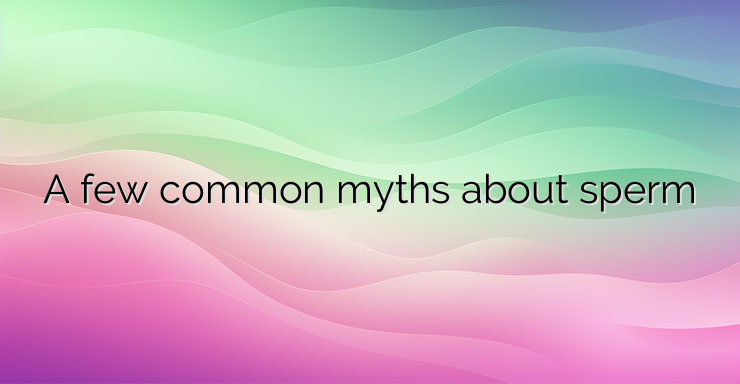The accepted theory in society is that after ejaculation, millions of “heroic swimmers (sperm) compete with each other so that only one can reach and fertilize the egg. First of all, sperm don’t actually “swim” forward, they just move without having a precise direction. The guidance to the fallopian tubes is due to the muscle contractions of the uterus, which makes them move. Sperm that enter the vagina after ejaculation can live for up to five days. This is due to the protective effects of cervical mucus and cervical crypts. But, if the sperm get into a dry environment, they quickly die. Ejaculated sperm that land on cold or dry objects can die within minutes – although very rarely they can survive up to 30 minutes. Also, hot water as well as chemicals from the water destroy them in minutes. Another popular myth is that the larger amount of sperm that is released during ejaculation increases the chance of successful fertilization. The truth is that the higher the concentration of sperm, the greater the probability of fertilization. But a larger quantity of semen does not always contain more sperm. Usually, only one sperm is enough to fertilize the egg, which at a later stage leads to the development of an embryo. After it penetrates through the shell of the ovum, the penetration of other spermatozoa is blocked. In cases where too many spermatozoa reach the ovum – two or more – the so-called polyspermy occurs. The additional genetic material, in turn, leads to an increase in the risk of DNA mutations and, accordingly, the development of certain syndromes – for example, Down’s, Klinefelter and others. A large number of them are characterized by potential and even fatal defects in the structures of the heart, spine and skull. With these data in mind, when the partners decide on in vitro fertilization (in vitro fertilization – IVF), it is not the number of sperm, but their quality that matters. In the information space, the myth about the consumption of pineapple, which leads to the improvement of the smell and taste of semen, is also “carrying”. The first thing to note is that the aroma and taste of semen, like other bodily fluids, is affected by general genetics, diet and lifestyle. Just as everyone’s breath can be different, everyone has their own unique scent. The second thing that’s important to note is that while certain foods or liquids may subtly change sperm aroma, following a diet rich in nutrients like vitamin C and B12 can have positive effects on sperm count, morphology, and motility. them


Leave a Reply